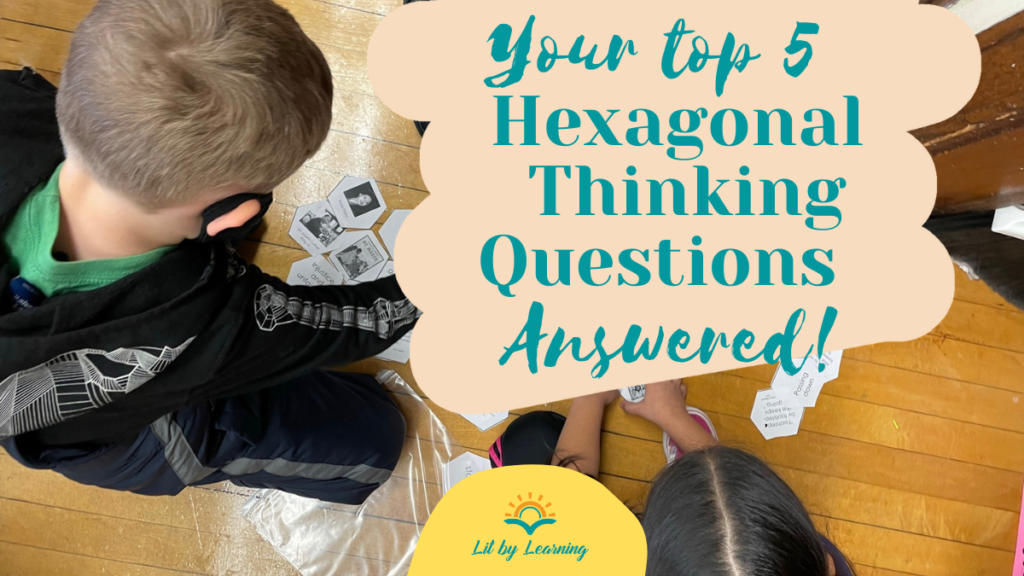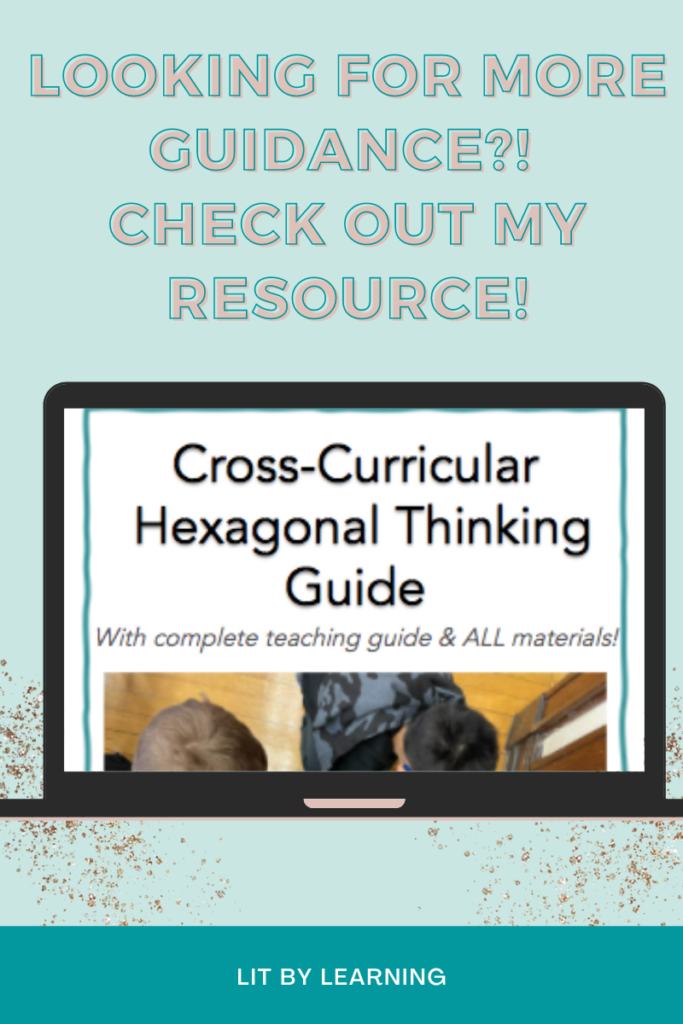What is hexagonal thinking? How do I use it in my classroom? These and more of your top 5 hexagonal thinking questions are answered below! Get ready to learn about a thinking strategy that will bring your teaching to the next level!

What is hexagonal thinking in the classroom?
Educator Betsy Potash first adapted the hexagonal thinking strategy, formerly seen in boardrooms, for the school classroom. It is a tactile, visual way for students to make connections within their learning. The idea is beautifully simple: write characters, quotes, themes, and ideas on hexagon-shaped pieces and then direct students to put them together like a puzzle. In order to place a piece next to another, students need to explain their connection. It creates a beautiful array of cross-cutting ideas where there are no wrong answers and plenty of room for creativity and innovative thinking. It’s also an excellent way to promote rich student-to-student conversations as pupils work cooperatively to organize, place and explain the tiles.
What does hexagonal thinking look like?
I tried to fit the answer to this question in this blog post and… it got unwieldy. Head over to my other hexagonal thinking blog post to see what this amazing strategy looks like in action. I’d also highly recommend this video!
What CCSS standards does hexagonal thinking address?
Great news: you can use Hexagonal thinking for virtually any standard in any subject. One of my favorite aspects of it is its flexibility and room for cross-curricular connections. That said, it shines the most in pulling together threads around a theme or big idea. These are usually difficult concepts to teach, but hexagonal thinking provides a clear format to guide all students. The strategy is incredibly useful in teaching the following Common Core English Language Arts Standards:
- CCSS.ELA-LITERACY.CCRA.R.2: Determine central ideas or themes of a text and analyze their development; summarize the key supporting details and ideas.
- CCSS.ELA-LITERACY.CCRA.R.9: Analyze how two or more texts address similar themes or topics in order to build knowledge or to compare the approaches the authors take.
- CCSS.ELA-LITERACY.CCRA.W.1: Write arguments to support claims in an analysis of substantive topics or texts using valid reasoning and relevant and sufficient evidence.
- CCSS.ELA-LITERACY.CCRA.W.9: Draw evidence from literary or informational texts to support analysis, reflection, and research.
- CCSS.ELA-LITERACY.CCRA.SL.1: Prepare for and participate effectively in a range of conversations and collaborations with diverse partners, building on others’ ideas and expressing their own clearly and persuasively.
- CCSS.ELA-LITERACY.CCRA.SL.5: Make strategic use of digital media and visual displays of data to express information and enhance understanding of presentations.

What age students can use hexagonal thinking?
Here’s the good news: hexagonal thinking is such a flexible and adaptive strategy that you can use it at ANY GRADE LEVEL! Does it look exactly the same in Kindergarten as in 11th grade? Of course not! But simple adjustments make this excellent activity accessible to all.
Hexgaonal thinking for early elementary
Hey – early childhood teacher here! Students as young as kindergartners can use hexagonal thinking! You simply need to adjust what is on your tiles and the kinds of support you provide. The younger the student, the more pictures (thinking illustrations, book covers, etc.) you’ll want to use. Support younger students by providing fewer tiles at a time and make sure to allow plenty of time to play. The more that students are able to discuss what they see, the better! Be strategic about when you pass out the glue! Finally, extensive modeling will be necessary, especially for our youngest students. Strategies like guided think-alouds, “we do” level demonstrations, and even fishbowling student-to-student conversations are all great ways to adapt this for younger learners.

Hexagonal grades upper elementary and up!
I personally don’t teach higher than third grade, but if you do, you’re in luck! Betsy Potash, the queen of hexagonal thinking, is your girl! In many of her free and paid resources, she uses hexagonal thinking for novel studies and beyond! Make sure you also check out her blog for how she uses the strategy with her High School students.
How can I get started with hexagonal thinking in my classroom?
You’ve read about it and you’re intrigued. Now it’s time to get started! Excellent! Getting hexagonal thinking going in your classroom is simple! Either design your own tiles using Power Point or Google Slides, use this free online generator. If you’re looking for a bit more guidance, be sure to check out my resource here!



